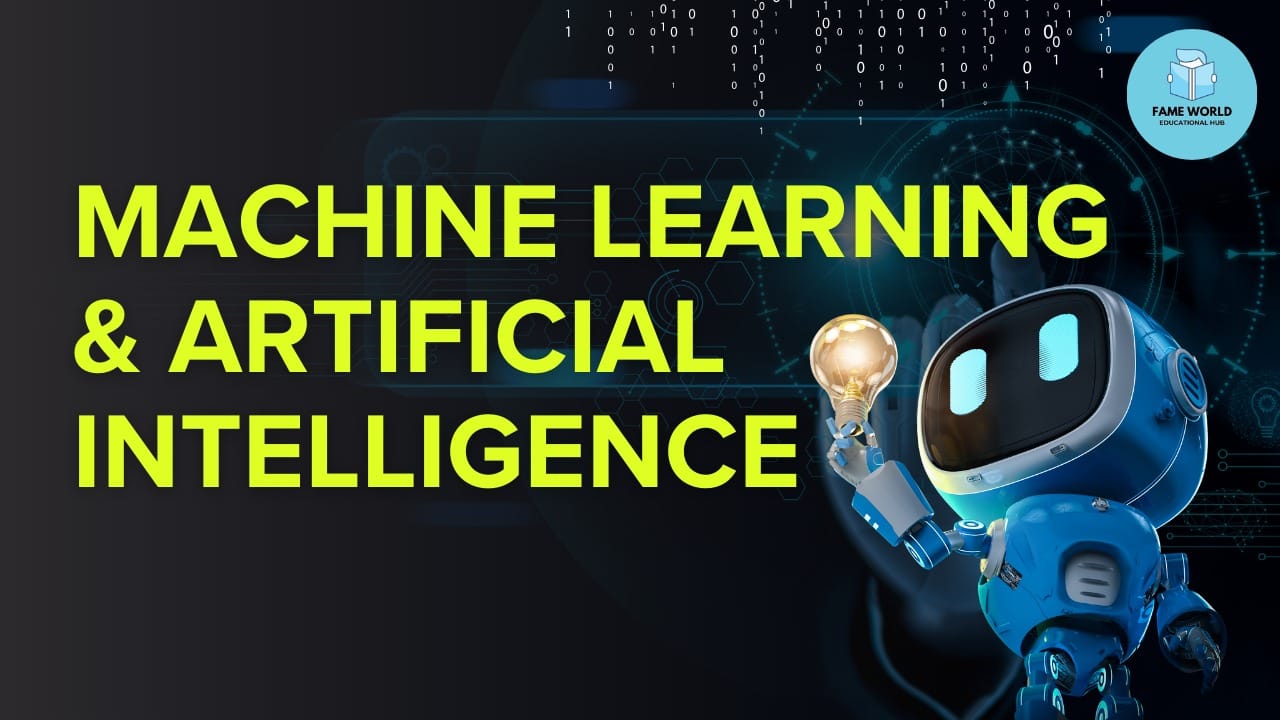Introduction
In today’s fast-paced digital world, terms like Artificial Intelligence (AI) and Machine Learning (ML) are buzzing around everywhere. From Netflix recommending your next favorite show to self-driving cars navigating streets, AI and ML are transforming industries and redefining the way we live. But what exactly are AI and ML, and how do they differ? In this blog post, we’ll break down these concepts and guide you through the fundamental principles of AI and ML.
What is Artificial Intelligence?
Artificial Intelligence (AI) refers to the simulation of human intelligence in machines. These machines are programmed to mimic human behaviors such as learning, problem-solving, reasoning, and decision-making. Think of AI as the overall umbrella that encompasses different fields like Machine Learning, Natural Language Processing (NLP), Computer Vision, and more.
AI systems can be categorized into two types:
- Narrow AI (or Weak AI) – AI systems designed to perform specific tasks. Examples include voice assistants like Alexa, Siri, or AI used in recommendation systems.
- General AI – This is a theoretical AI that possesses human-level intelligence and can perform any intellectual task that a human can. We are still far from achieving this level of AI.
Real-world Applications of AI
- Healthcare: AI-powered tools can assist doctors in diagnosing diseases, predicting patient outcomes, and even performing robotic surgeries.
- Customer Service: Chatbots are revolutionizing the way companies handle customer inquiries, providing 24/7 support.
- Finance: AI-driven algorithms are used in stock trading, fraud detection, and managing investments.
What is Machine Learning?
Machine Learning (ML) is a subset of AI that focuses on enabling machines to learn from data. Instead of being explicitly programmed for every task, ML algorithms improve themselves based on patterns in data. The more data they process, the better they get at making predictions or decisions.
Types of Machine Learning
Supervised Learning: The model is trained on labeled data (data with known outcomes). It’s like teaching a child by showing them pictures of cats and dogs and telling them which is which.
Example: Spam detection in emails, where the algorithm learns to identify spam based on labeled examples.
Unsupervised Learning: The model is trained on data without labeled outcomes. The system looks for hidden patterns or relationships.
Example: Market segmentation, where customer groups are divided based on purchasing behavior without prior labels.
Reinforcement Learning: The model learns through trial and error, receiving rewards or penalties for its actions.
Example: Game-playing AI like AlphaGo, which improves by playing many games and learning from each outcome.
How AI and ML Work Together
AI and ML are closely intertwined. Machine Learning algorithms power many AI systems by allowing them to learn and adapt. For example:
- AI chatbots use NLP to understand language (AI), but the chatbot’s ability to improve its responses comes from ML.
- Self-driving cars rely on AI to perceive their environment (through computer vision) and make driving decisions, but their learning to navigate is powered by ML models.
Key Concepts in Machine Learning
1. Data
Data is the foundation of any machine learning model. Clean, well-labeled, and representative data is crucial for building accurate ML models.
2. Algorithms
Algorithms are the core processes that the machine uses to analyze data and make predictions. Common algorithms include:
- Linear Regression: Predicting a continuous outcome based on input variables.
- Decision Trees: Making decisions based on data attributes.
- Neural Networks: The backbone of deep learning, mimicking the human brain in structure.
3. Training and Testing
In ML, you split data into two sets:
- Training data: Used to teach the model.
- Testing data: Used to evaluate the model’s performance on new, unseen data.
4. Model Evaluation
After training a model, we evaluate its performance using metrics like accuracy, precision, recall, and F1-score. These help ensure that the model isn’t just memorizing data (overfitting) but is generalizing well.
Challenges in AI and ML
1. Data Quality
Machine learning is only as good as the data it’s trained on. Poor-quality data can lead to inaccurate predictions.
2. Bias
AI models can inherit biases from the data they are trained on, leading to unfair or incorrect outcomes. For example, facial recognition systems have been criticized for their inaccuracy with darker skin tones.
3. Ethical Concerns
As AI takes on more decision-making roles, ethical concerns arise. Who is responsible when an AI-driven system makes a wrong decision? How do we ensure AI respects privacy and fairness?
4. Complexity
Building and deploying AI and ML models require specialized knowledge, and not every business has the resources or expertise.
Getting Started with Machine Learning
If you’re excited about the potential of AI and ML, the good news is that you can start learning today! Here’s a quick roadmap to begin your journey:
1. Learn the Basics of Python
Python is the go-to programming language for AI and ML. Get comfortable with Python syntax, libraries, and basic coding concepts.
2. Study Key ML Libraries
Familiarize yourself with ML libraries like scikit-learn, TensorFlow, and PyTorch, which provide pre-built algorithms and tools for building models.
3. Explore Data Science
Learn how to manipulate data using tools like Pandas and NumPy, and dive into data visualization with Matplotlib or Seaborn.
4. Take Online Courses
There are countless online courses available for beginners, such as Coursera’s Machine Learning by Andrew Ng, which provides a solid foundation.
5. Work on Projects
Apply what you’ve learned by working on real-world projects. Start with simple projects like predicting house prices or classifying images.
Conclusion
Artificial Intelligence and Machine Learning are not just buzzwords—they are powerful technologies shaping the future of everything from healthcare to finance to entertainment. Whether you’re a developer looking to dive into this exciting field or just curious about how it all works, understanding AI and ML is the first step to unlocking the potential of these groundbreaking technologies.
Ready to take the next step? Share your thoughts or ask questions in the comments, and let’s explore the world of AI and ML together



